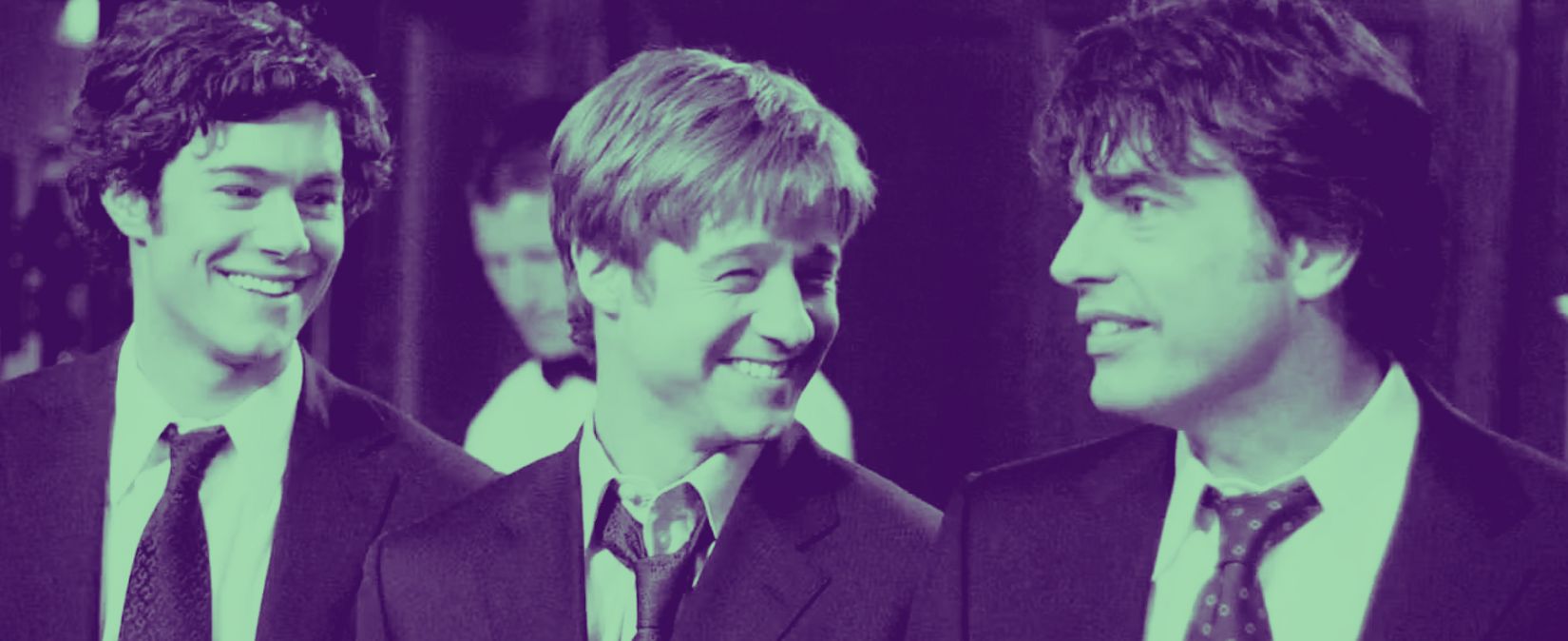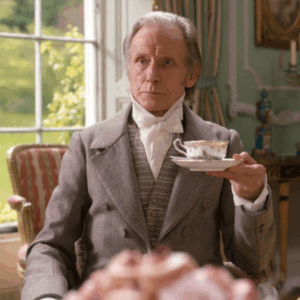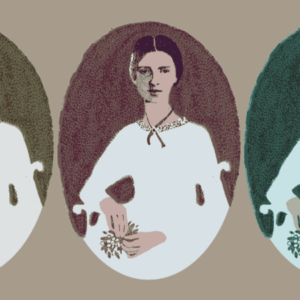
All in the Family: Considering Television’s Orphan Plot
Kristen Martin on the Superficial Portrayals of Orphanhood on 90s TV
The first kid I knew who didn’t live with his parents was Shawn Hunter, Cory Matthews’s best friend on Boy Meets World. Like many in the 1990s, I grew up alongside Shawn and Cory, one episode at a time. Though Boy Meets World was set in Philadelphia, the white bread world of Cory (the titular boy, played by curly-haired dweeb Ben Savage) felt not unlike my own in the Long Island suburbs.
As with the coming-of-age family sitcoms that came before it—notably The Wonder Years, a 1960s nostalgia machine that starred Ben’s older brother Fred Savage—the series centered on dilemmas faced by middle-class white kids who live in the cushioned shelter of a tight-knit nuclear family. My own family was akin to the Matthewses back then: working father, stay-at-home mother, sitting down for a home-cooked dinner together nightly. The biggest difference between Cory’s life on Boy Meets World and my own was that I didn’t have any friends like Shawn.
Growing up, nearly all of my friends’ families were like my own. Most of my friends’ moms stayed at home or worked in the kinds of jobs that meant they could still pick up their kids after school and be active in the PTA. One ran a hairdressing business out of a salon her husband built in their basement, and she cut my hair and my mom’s for years; later, she’d take my mom wig shopping before she started chemo.
Most of the dads worked solid middle-class jobs; several were cops like my dad. I only had one close friend with divorced parents, and she and her mom lived in a house almost twice the size of mine, with a formal living room and a den and a jacuzzi tub upstairs. In West Hempstead, there were no trailer parks like the one Shawn lived in; the only apartment buildings I knew of were the ones we passed on the way to Roosevelt Field Mall in the wealthy village of Garden City a few miles away.
This is all to say that Shawn’s life even before his parents abandoned him—full of precarity, leaving him rough around the edges from living among bullies and petty criminals in a trailer park, with a huckster father who scraped by on tall tales and a mother who was essentially a nonentity—was foreign to me. I saw Shawn’s character through the framework of what my parents referred to as “WT”: white trash. They used the code because they knew the term was a slur, one that paints poor white people as worthless and disposable. I was familiar with WT from families on other TV shows we watched, like the Connors on Roseanne, the Bundys on Married with Children, and, at the extreme end of the spectrum, the redneck Spucklers on The Simpsons. The shows made it seem like the poorer you were, the more backward, uncivilized, and “undeserving” you were.
Shawn’s characterization on Boy Meets World would eventually fit into the grooves of well-worn WT tropes, and those tropes would be used to explain why he didn’t get to have a family—not one like Cory’s, anyway. Because Shawn’s father couldn’t hold down a job, because his mother ran away, because they lived in a trailer instead of a house built into the ground—because, essentially, they were poor—they did not deserve to stay together. Boy Meets World wants us to believe that Shawn would be better off without his parents in his life, and watching the show as a child, I bought into that notion.
Shawn’s character arc follows the script for dependent children’s stories that Charles Loring Brace set when he promulgated his theories about the “dangerous classes” and “vicious” gemmules in the mid-nineteenth century, ideas that would be repeated, refined, and eventually revised in orphan train fiction. That Shawn improbably never encounters the child welfare system makes his story even more appealing. For much of Boy Meets World, Shawn may be effectively parentless, but he gets the silver lining of a move from “trailer park trash up to decent society,” as he says, without encountering the abuse, control, and disorder of the foster care system.
In pop culture, foster care is always—like life in an orphanage or with a poor family—something a character has to escape or overcome in order to have a fighting chance. Boy Meets World sidesteps the issue entirely, speaking to how, in the 1990s, we were so afraid of foster care that we preferred to pretend that it didn’t even exist. Shawn Hunter—though he was never a foster kid and does not become an orphan until he is over eighteen—is the orphan character of 1990s sitcoms.
Shawn Hunter recalls Mark Twain’s famous half orphan Huckleberry Finn, who resists efforts to be “sivilized” by the Widow Douglas, who takes him in because his mother is dead and his father is a drunk and a vagrant. In the opening chapter of The Adventures of Huckleberry Finn, he describes sitting by the window at the Widow Douglas’s after a dreadful evening of being nagged for bad manners, looking out at the night: “The stars was shining, and the leaves rustled in the woods ever so mournful; and I heard an owl, away off, who-wooing about somebody that was dead, and a whippowill and a dog crying about somebody that was going to die.” Like Shawn, soon he’s out the window. It’s the start of Huck’s true adventure, driven by an unstoppable Manifest Destiny–like urge to “light out for the territory.”
Huck can’t stand being contained, but Shawn finds a middle ground. Mr. Turner—the cool young English teacher who rides a Harley-Davidson—offers Shawn a place to stay for as long as he needs. This solution affords Shawn the freedom he has grown accustomed to as a latchkey kid with parents who are permissive because they can’t afford to pay attention to him, as well as the support of the Matthewses whenever he wants or needs it. Mr. Turner becomes his teacher-roommate, the kind of adult who doesn’t mind if Shawn eats cold pizza for breakfast as long as he gets himself to school before the first bell.
*
We’re not always satisfied to see orphan characters lose the family they had in order to get a second chance with a wealthier new family. In the biggest orphan show of the 1990s—the only one that featured honest-to-goodness orphans, whose parents were both dead—a rags-to-riches, nature-versus-nurture tale wouldn’t have worked. That’s because the family wasn’t poor to begin with.
I’m talking about the teen drama Party of Five, which aired on FOX for six seasons from 1994 to 2000. It is impossible to write about orphans on television in the 1990s without considering Party of Five, which blended classic orphan tropes with the teen angst we came to love in the 1990s from shows like My So-Called Life, Dawson’s Creek, and the very soap-y Beverly Hills, 90210. Christopher Keyser, who cocreated the show alongside Amy Lippman, remembered that the network’s idea was “Don’t tell the babysitter that Mom and Dad are dead!” But Keyser and Lippman wanted to lean into the dark side of growing up too soon, and Lippman said that they hoped to flip “standard expectations about a family of orphans on its head.”
The idea that Party of Five broke any new orphan ground is hilarious to me because it reinforces one of the oldest stories in the orphan book: the adventure plot. With its focus on a large family of orphans, Party of Five recalls the classic children’s book series The Boxcar Children, which debuted in 1924 and is still publishing more than 150 books later, with new authors taking over for Gertrude Chandler Warner after her death in 1979. In the original version of the very first book, Henry, Jess, Violet, and Benny Cordyce, who range in age from thirteen to five, are orphaned after their drunk father drops dead from drinking. This happens on page two—might as well get the orphaning out of the way, I suppose. Their mother has already died of causes that are never revealed. That’s because the books never focus on the children’s loss, centering instead on their adventure of survival, self-reliance, and hard work.
The Cordyce orphans abandon their home in order to stay together and out of the reach of their rich steel-magnate grandfather (“Daddy” Warbucks, anyone?). They’ve never met their grandfather, but they fear he will treat them “cruelly” because he hadn’t wanted their father to marry their mother. Soon they take refuge in an abandoned boxcar in a forest, which they make into a home replete with a bedroom on one side and a sitting room/dining room/kitchen/parlor on the other. The youngest three children wash dishes they found at the dump in a makeshift washtub and decorate with a vase full of flowers, dutifully recreating acts of domesticity. Henry, the oldest, finds work doing odd jobs at the home of a doctor, who has a cherry orchard. It all makes for a parable for American values of independence, stick-to-itiveness, and making ends meet that rivals the Little Orphan Annie comics.
The tension that drives the show is not the grief of losing both parents so suddenly but the fact that the Salingers are caught between the glorious freedom of coming-of-age without a curfew and the burden of being responsible for their own upbringing.
When Warner, a first-grade teacher, rewrote and abridged the first book in 1942 to appeal to early readers, she sharpened the adventure plot by pulling back on the whole dead parents thing even further: here, both parents (now with the surname Alden instead of Cordyce) are dead from the get-go, and the circumstances of their deaths are a black hole that is never addressed.
In the books that follow, the children decide to move in with their grandfather, whom they discover is not the “cross” old man they feared him to be. Their boxcar home is relegated to a playhouse in Grandfather Alden’s backyard, and their adventures shift to solving mysteries. Conveniently, in a situation that mirrors the Annie comics, Grandfather Alden always seems to be off on business or out of town. This allows the orphans a similar degree of autonomy as they enjoyed when they were actually living in their boxcar, so they can go off and solve these mysteries, which concern everything from uranium mines to blackmail schemes to the theft of their boxcar.
In Party of Five, the Salinger siblings, who are orphaned when their parents both die in a car accident six months before the pilot, are not sleuths. Instead, their adventures—like throwing wild parties in the San Francisco Victorian they’ve inherited—are scaled to fit into a 1990s teen drama. As in The Boxcar Children, we want to see the Salinger siblings stay together at all costs. It wouldn’t be satisfying to have all of them enter the same foster home or even be adopted together, because the allure of the show is that there are no adults in charge. The tension that drives the show is not the grief of losing both parents so suddenly but the fact that the Salingers are caught between the glorious freedom of coming-of-age without a curfew and the burden of being responsible for their own upbringing.
They manage to avoid foster care or other adult supervision when their parents die because the oldest sibling, Charlie (Matthew Fox), is twenty-four—old enough on paper to be a legal guardian, even if he’s so immature and ill-suited to the job that the others remind him that “a piece of paper doesn’t make you a parent.” The next-oldest, Bailey (Scott Wolf), is only sixteen, but he takes over as the responsible one who balances the checkbook and takes charge when they have to hire a new nanny for Owen, the youngest, who is still an infant. In between are fifteen-year-old Julia (Neve Campbell), the smart and sensitive one, and eleven-year-old Claudia (Lacey Chabert), a violin prodigy. Episodes in the first season revolve around typical teenage problems: Should I have sex? How do I find friends who respect me instead of just using my house for parties?
I missed out on Party of Five mostly because my parents themselves were not interested in watching teen dramas, and the show hopped around at the 9:00 p.m. timeslot on various weeknights, when they ruled the remote control and preferred to watch, say, Seinfeld. I never knew that Party of Five was an orphan show when it was airing; to me, it had a reputation as just another teen “problems” show. I tuned into Party of Five as an adult expressly to consider how it did—or didn’t—jibe with the reality of contemporary American orphanhood.
The show does get one thing right in my eyes. Unlike with Shawn Hunter on Boy Meets World and Ryan Atwood on The O.C., it does actually make sense to me that the middle-class Salinger siblings were able to avoid foster care and stay together. After all, John and I did too. That’s because my family had the means to make other arrangements for us. My father visited a lawyer to make a will in late October 2002, ten months after my mom died. In that will, he appointed his sister Mary Ellen as “the Guardian of the person and property of any children of mine who have not attained the age of majority,” with his sister Alice to act as guardian of the person if Mary Ellen should “fail or cease to act.”
This meant that when he died fifteen months later, John and I were not left in a legal limbo. If Dad hadn’t named a legal guardian for us, a judge in Nassau County’s Surrogate’s Court, which handles the administration of deceased people’s estates, would have named one for us, almost certainly choosing a relative and perhaps even the ones my father had chosen himself. Some states, like Pennsylvania and Maryland, even call these courts orphans’ courts because historically they were concerned with protecting the material inheritances of children whose landowning fathers died.
The state of orphanhood in and of itself is not what we want to see on television. Instead, we want to treat being orphaned as a precipitating event, not look at what it really means to lose your parents.
Even if our father hadn’t had a will, John and I would have ended up in foster care only if no one in our lives had been suitable and willing to act as our legal guardian. Our lives were nowhere near that precarious. Children like me, with a certain degree of privilege afforded by class and race—even fictional children like the Aldens and the Salingers—still get All in the Family to keep what remains of our families after our parents die. It’s not as easy for charities and governments to exercise power over our lives and profit from doing so.
When it comes to the reality of Party of Five, it does seem implausible that Charlie would be named as legal guardian for all of his siblings, since when the show starts he is a barely employed college dropout who is bad with money. But unlike in The Boxcar Children, there is no kindly, rich grandfather here to step in to materially support, but lackadaisically supervise, the Salingers. Instead, they get financial support from their parents’ estate—$15,000 every four months. In the pilot, Charlie’s suitability as a legal guardian and all of the kids’ ability to parent themselves and manage money come into question.
Charlie reveals that he was swindled out of $12,000 in a house-flipping deal gone wrong. The worst of their problems is not that their parents are dead but that they have to figure out how to stretch the money allotted for them to avoid further supervision. Going to the executor of the estate—some guy named Mr. Graham whose connection to the family is a mystery to viewers—isn’t an option. “We’ve gotta seem in charge!” Bailey yells. “We’ve gotta make it seem like we can handle everything ourselves, like a normal family, or else they have an excuse to split us up.” “They”—social workers?—are too scary to name.
The Salingers make it work—of course they do—and there’s enough time left in the episode for Julia to both embark on a new romance with a bad boy and get broken up with, far sexier material than household budgeting. Other episodes in season one walk the same line of addressing questions viewers might have about how this whole orphans-taking-care-of-themselves thing works out alongside standard teen drama fare. Do the Salingers really not have other relatives?
As a family tree assignment for Claudia reveals, there’s only an uncle in France. Their grandparents are dead, save maybe their maternal grandfather, who walked out on the family when their mom was a kid, and Claudia’s efforts to track him down lead to a dead end. Are they really not on the radar of child protective services? Halfway through the season, the writers introduce a social worker named Mrs. Gideon who will never appear again, apparently convinced that the Salingers are doing just fine, despite the fact that when she makes a drop-in visit at 10:00 p.m. on a school night, Claudia is missing in action.
On the one hand, yes, life goes on, even after your parents die—mine did. My parents’ deaths were devastating, and I still had to go through my teen years after they died. On the other hand, the writers crammed the first season of Party of Five with what reads like a greatest hits of sensational teen dilemmas: Periods! Getting carded! Boyfriends! Sex, drugs, and drinking! Later seasons are no less over the top. A Los Angeles Times article about the series’ ending in 2000 makes a macabre but apt declaration: “If you believe in karmic justice, hanging by a noose from a limb somewhere high atop the Salinger family tree is an ancestor who committed unspeakable horrors, forever condemning [the siblings] to make endless acts of attrition.”
Party of Five struggled with Nielsen ratings at the beginning and end of its run, but it was a critical success. It’s now remembered as an underrated teen drama, one that was especially good, as one writer for the AV Club argues in a retrospective, after it got its “orphan material mostly behind it.” It’s a crass comment, but one that makes sense when we consider that the state of orphanhood in and of itself is not what we want to see on television. Instead, we want to treat being orphaned as a precipitating event, not look at what it really means to lose your parents.
*
We’ve gotten a little less afraid of representing foster care on television in the past decade. But in large part, the storylines have merely undergone the Annie remake treatment: instead of meaningfully grappling with what it would mean to accurately portray the experience of being in foster care, recent television shows have acted as though the major problem with earlier stabs at the narrative was that they were too white and heterosexual.
Take, for instance, the ABC Family drama The Fosters, which aired from 2013 to 2018 and was executive-produced by Jennifer Lopez. The series, conceived out of a desire to make a show that “reflected the modern American family,” as though there is such a thing, follows a middle-class lesbian couple in a San Diego suburb—Stef Foster, a white police officer, and Lena Adams, a Black high school vice principal. They have a teenage biological son (white) and teenage twins adopted from foster care (Latinx), and when the series starts, they are fostering a teenage girl (white) who has recently been released from juvenile detention.
The pilot is full of drama: turns out the girl was in juvie for protecting herself against her abusive foster father, who is still abusing her little brother. Stef comes to the rescue, arresting the foster father at gunpoint. Of course, the Fosters will eventually adopt these kids too, as though the goal of foster care is not reunification but giving foster kids new middle-class families.
In an interview with HuffPost, cocreator Bradley Bredeweg noted that his perspective on foster care was shaped by a high school friend who was in the foster care system: “She was quite a broken girl. . . . Then she finally found a family that took her in and was paying close attention to her and giving her love. Over the next couple of years she really came in to her own. She learned to accept that love.” The idea that foster youth are fundamentally “broken,” that they need to “learn to accept love,” is offensive and damaging, and The Fosters spread it throughout its five-season run.
Then there’s the family drama of recent memory, NBC’s This Is Us, which ran from 2016 to 2022 and garnered a slew of accolades, including Emmy wins. The show follows the adult Pearson “triplets,” Kate, Kevin, and Randall, through contemporary scenes and flashbacks. One of the original triplets was stillborn, but parents Jack (Milo Ventimiglia) and Rebecca (Mandy Moore) believed they should still have three children, so they adopted Randall (Sterling K. Brown), a Black baby abandoned as a foundling and born the same day as Kate and Kevin. We’ve already got an adopted-foundling plot, but wait, there’s more—in the second season, Randall and his wife foster a Black teenage girl named Deja, who has been—get this—abused and neglected by other foster families. Deja’s a troubled teen, but she eventually learns to accept the Pearsons’ love and, ding ding ding, is adopted by them. These families may be more diverse, but the plot lines are Boy Meets World and The O.C. all over again.
Even the 2014 remake of Annie—the first race-switched treatment of the story—brought it up to the contemporary moment by changing mean Miss Hannigan’s orphanage into mean Miss Hannigan’s Harlem foster home. The film stars eleven-year-old Quvenzhané Wallis as Annie and Jamie Foxx as Will Stacks, a modern “Daddy” Warbucks. I literally screamed out loud recently while reading about how this fantasy infiltrated one child’s mind so strongly that he ran away from home and landed himself and his siblings in foster care.
That story comes halfway through journalist Andrea Elliott’s book Invisible Child, which traces the life of Dasani Coates, a girl who grew up in homeless shelters in New York City, her family frequently under the surveillance of child protective services. Dasani’s youngest brother, Papa, was home alone in a dilapidated apartment in Staten Island one January afternoon when he watched the new Annie on a bootleg DVD. Three days later, in eighteen-degree weather, he left home without a coat, wandering Staten Island’s North Shore for hours until he was picked up by the police. He later told a child protective services worker, “I watched the movie Annie and I want to go to a foster home, too.” He got his wish—though only in part, for there are no “Daddy” Warbuckses or Will Stackses in real foster care.
__________________________________________

Excerpted from The Sun Won’t Come Out Tomorrow: The Dark History of American Orphanhood by Kristen Martin. Copyright © 2025. Available from Bold Type Books, an imprint of Hachette Book Group, Inc.
Kristen Martin
Kristen Martin is working on a collection of essays that meditates on grief, death, and life. Her personal and critical essays have been published in The Cut, Hazlitt, Catapult, Real Life, and elsewhere. She received an MFA in nonfiction writing from Columbia University, consults with writers at the Columbia University Writing Center and teaches writing at NYU.












